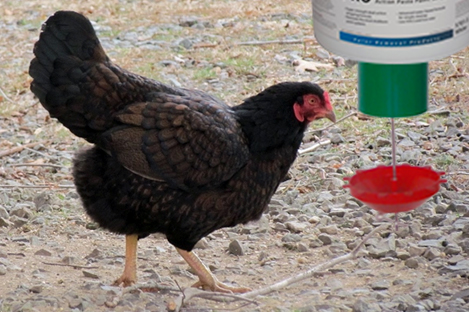
The Cornish Hen was developed by Sir Walter Gilbert, 1st Baronet of county of Cornwall in the United Kingdom around 1820. They are heavy, muscular birds that lay brown eggs and are the most-used breed in the chicken meat industry. Until 1905,it was known as Indian Game in America, when the American Poultry Association passed a motion to rename the breed to Cornish Indian Game. The name implied that the breed came from India and to avoid such confusion, it was renamed as Cornish in 1910.
The type of the male and female are identical to this breed. Excellent meat qualities such as the breed’s thick, compact bodies, unusually wide backs, and broad, deep breasts make them the perfect choice for the table. They are also nice layers of firm-shelled brown eggs. Males weigh 10.5 lbs., and females weigh 8 lbs. Wide skulls, medium length necks, thick, short shanks, and their legs which are set wide apart are other physical attributes.
The health and productivity of the chickens is dependent on the feed it receives. It is, therefore, important to include correct nutrients, vitamins and minerals in their diet. If feeding pellets, cracked corn or wheat the 5/8-inch regulator disc can be used. The 1/4-inch regulator disc from PECk-O-MATIC Automatic Chicken Feeder can be used when millet or mash constitutes the feed.
The breed was accepted to the American Poultry Association’s (APA) Standard of Perfection in 1893 as Indian Games and later to Cornish in 1910. The White variety was accepted in 1898, White-laced Red in 1909and Buff in 1938. The two varieties of the Cornish are the Cornish Game and the Jubilee Cornish Game. The Cornish Game is dark bluish green in color, with brown patterning on the hens. Jubilee Cornish Game is much lighter, and less stocky. They are usually light wheaten in color, with light brown patterning.